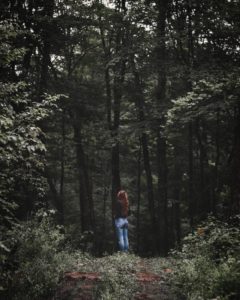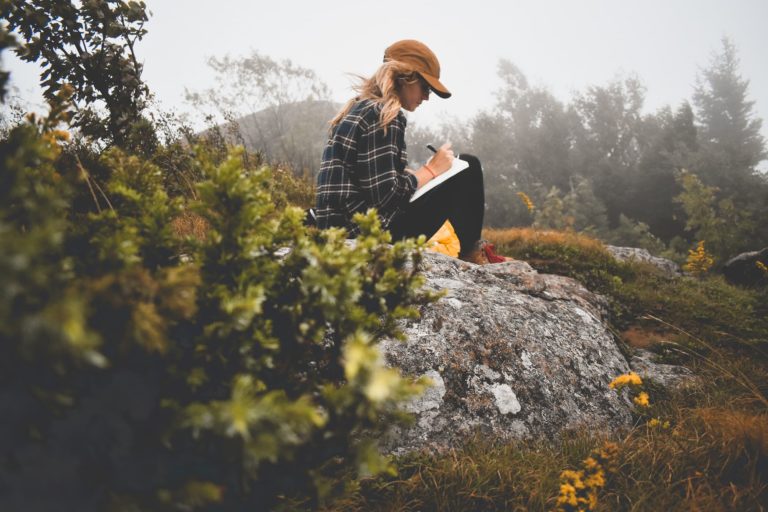Mindfulness-Based Stress Reduction - 6 Tactics to Reduce Anxiety and Risk of Burnout
The risk of burnout is real for virtually everyone with a full-time job in today’s world. Understanding how to mitigate the factor of stress induced by work is necessary if you want to avoid burnout down the line. Our holistic recommendation is to practice mindfulness as a remedy for anxiety, and as a source of meaning in your life. What does that look like? There are many ways to hone mindfulness. Your practice will likely be personal and idiosyncratic, while simultaneously blurring the line between the self and the collective. There are many ways to find this state of being, some more straightforward than others. Here are some mindfulness exercises that are both fun and spiritually fulfilling, the type of stuff to get your mind off work and into a more relaxed and present place.
Forest Bathing
The term shinrin-yoku, also known as forest bathing, was coined in Japan in the 1980s to describe the art of drinking in all of nature’s glorious details. This neologism described a practice that has been a part of human existence from the beginning. To forest bathe, you first need some space with natural features. Ideally, it would be great to pick somewhere fully immersed in natural surroundings like deep in the Berkshires, where views are abundant and you can easily absorb nature’s healing energy. On days where you can’t get so far away, try walking silently in the grass at a nearby park. This moment of soaking in the natural elements with all your human senses can do wonders in removing you from an anxious headspace.
Breathwork
We have extensive proof of the benefits of Breathwork on both the mind and body. Indeed, breath is a fundamental life-sustaining force and it is deeply connected to our spiritual sense of wellbeing. But furthermore, cultivating a practice of conscious breathing exercises is an especially helpful tool for fighting anxiety. Breathwork can be employed anywhere in order to calm the mind, making it great for unexpected situations where you might be flustered or in a rush. The quick relief and chemical changes in the brain produced after a breathing exercise can help steer the direction of the day away from a place of despair and towards more constructive outcomes.
Meditation
Like Breathwork, meditation is a beautifully simple mindfulness exercise that requires nothing other than willpower and presence of mind. Much like journaling, meditation offers a view into your own thoughts and the chance to see yourself from a different perspective. For beginners, the bulk of mediation will be spent trying to calm and consolidate the “monkey mind” or our tendency to have uncontrollable and rapidly moving thoughts. Learning to control this aspect of the mind allows anxious thoughts to be screened in the future and ultimately leads to a much more relaxed psychic landscape.
Yoga
Most people in the west associate yoga with a class full of people on mats moving through postures. While yoga classes are an amazing way to de-stress and unwind the body and mind, the truth is that “yoga” is a much deeper philosophy. The classes are just the tip of the iceberg. In reality, yoga has been described since its creation thousands of years ago as an approach to life. It is the fusion of being playful and disciplined, the need to eat healthy mixed with the fondness of flavor. Yoga practitioners study ayurveda (an ancient dietary wellness system) as well as asana (the study of physical being) and pranayama (the study of directing breath). Taken all together, yoga provides a comprehensive base of mindfully structured philosophy.
Journaling
Most often, when we share our thoughts we are doing it for other people. Whether it’s in a meeting or on social media, our ideas are put on display for others to see. One thing we rarely get to do is fully develop ideas and have conversations with ourselves. Journaling is a great way to open up this inner dialogue, one that inevitably leads to mindfulness from stopping to observe oneself. It is a safe space to share your most private feelings without any judgement from outside. As illuminating as writing in your journal can be, revisiting past entries and seeing your own growth over time is one of the most eye opening things you can do. Next time you feel anxious about something in your life, try writing about what it is that is worrying you and how it makes you feel. By doing this you are also validating your own emotions and fears instead of keeping them bottled up.
Volunteering
Mindfulness can eventually lead us all to a place of deep compassion for other living beings. One of the best ways to nurture this compassion is through helping others in need, or otherwise lending a hand. By volunteering we are finding purpose through the act of uplifting the collective. Those who volunteer report feeling a greater sense of community and belonging. If you volunteer in a capacity where you directly interface with people, you will get the rush of seeing the relief and happiness you’re bringing to your community. It truly is a transformational practice to live in accordance with right action and help out where you can.
Hopefully, through these conscious everyday actions you can avoid burnout and find moments of respite in the midst of stressful conditions. Even if the steps you take to defuse your stress triggers seem small, they can have an immense effect cumulatively. Having several tactics that you use regularly is much better than waiting until things are falling apart. Still, it’s understandable if you find it difficult in the beginning. The hardest part of gaining momentum is the start, it’s the stage that requires the most energy. The main reason why we offer the trips we do is so you can find a safe space to relax, breathe, and recalibrate. Sometimes, we just need a small push to get back on the right track. At Recal, we’re here to give you the tools you need to live a more peaceful and mindful life.


